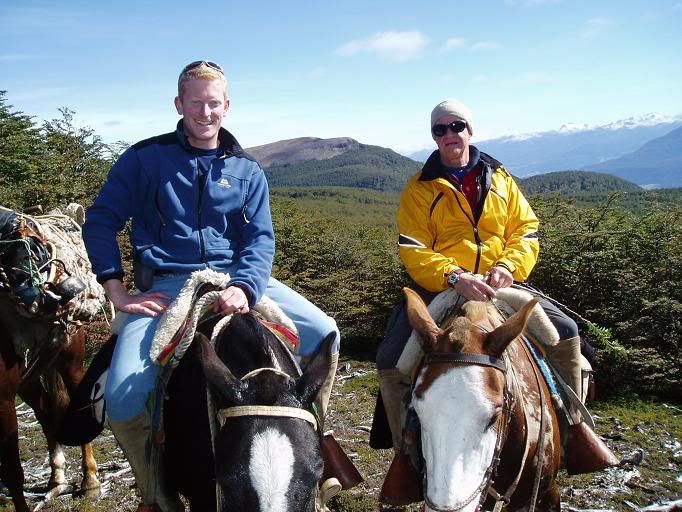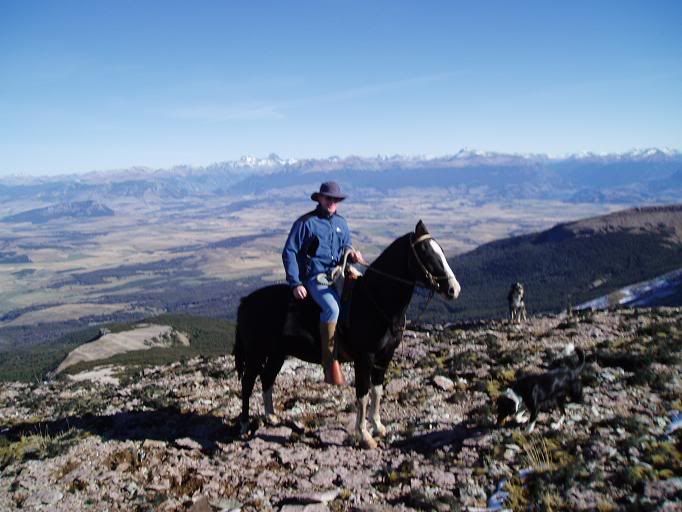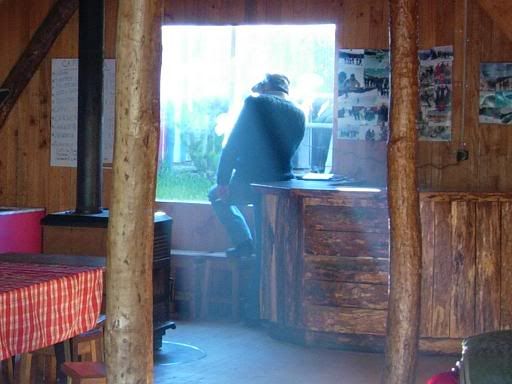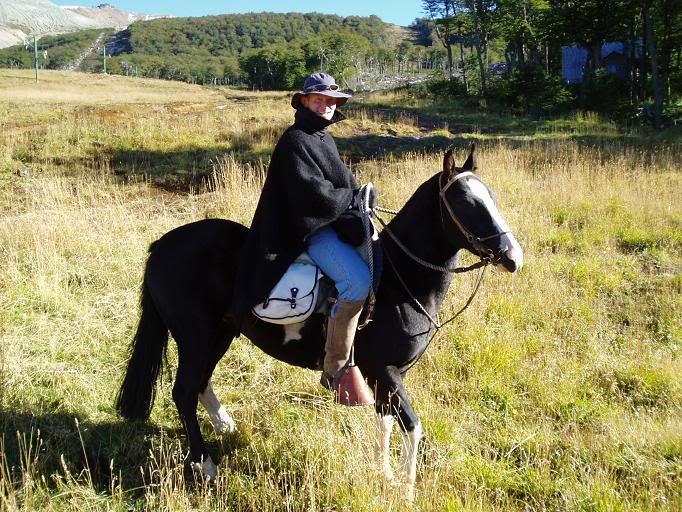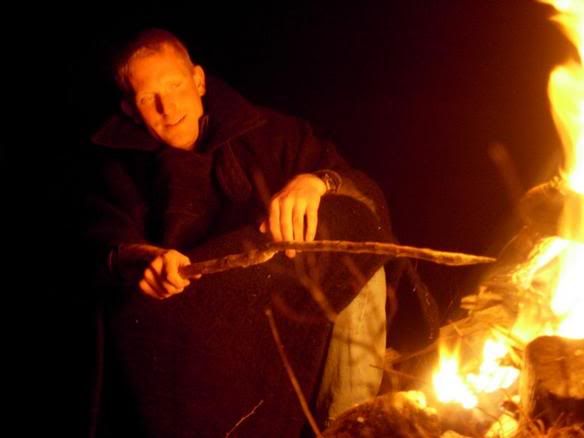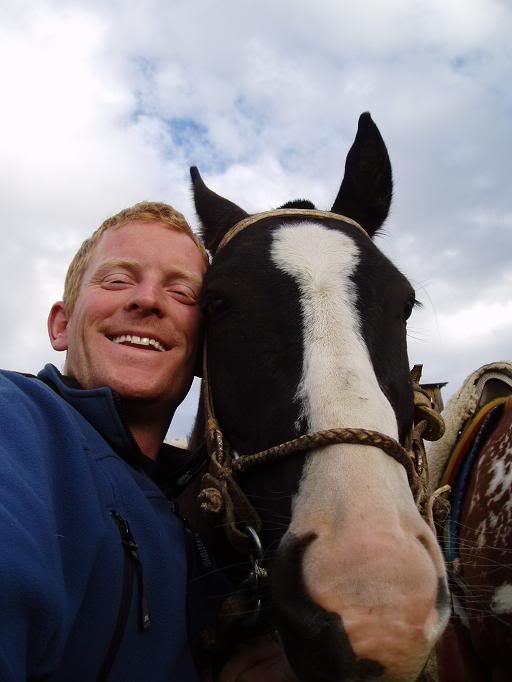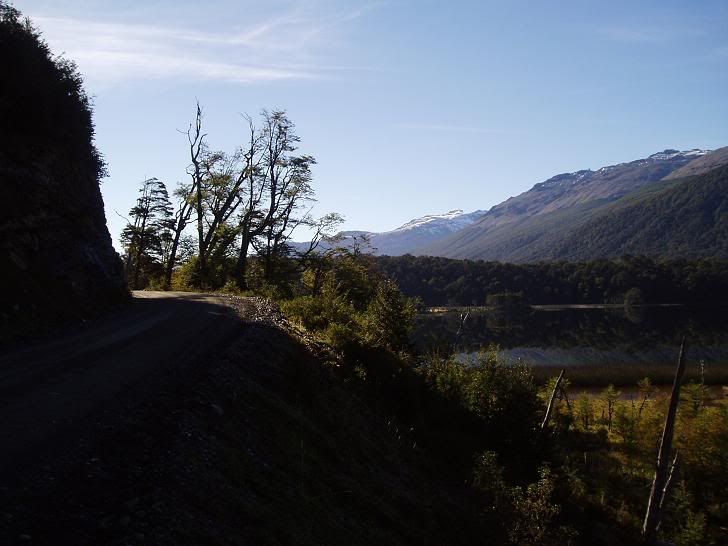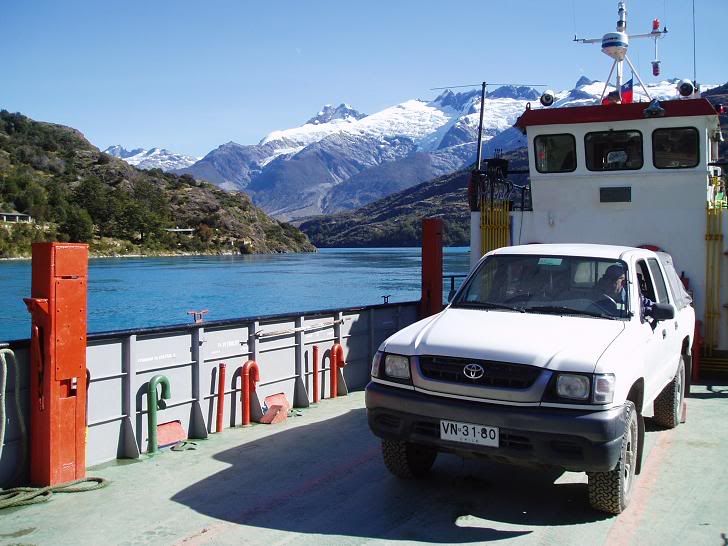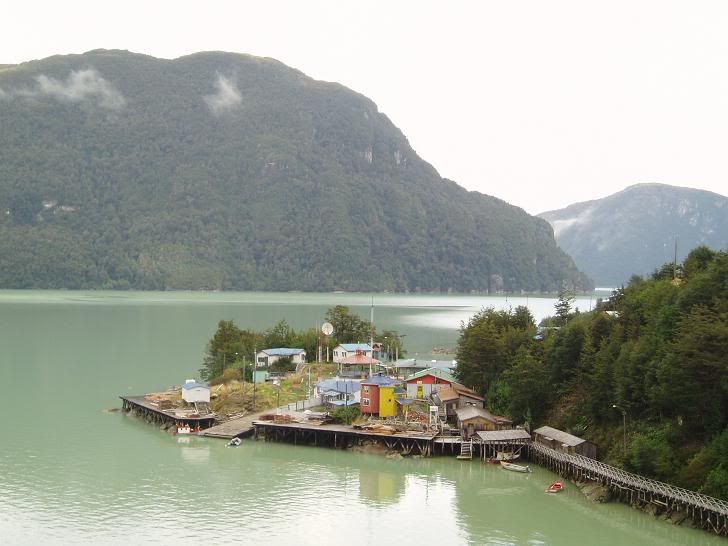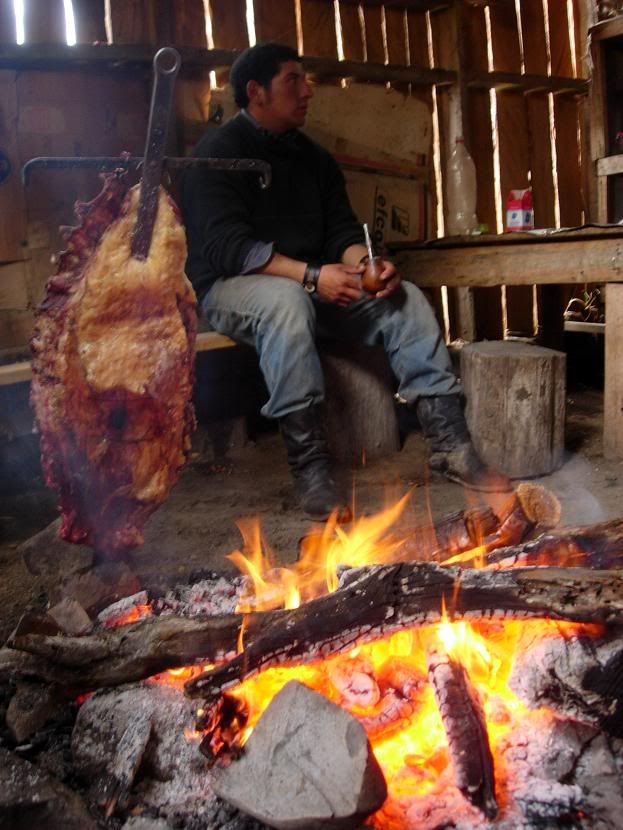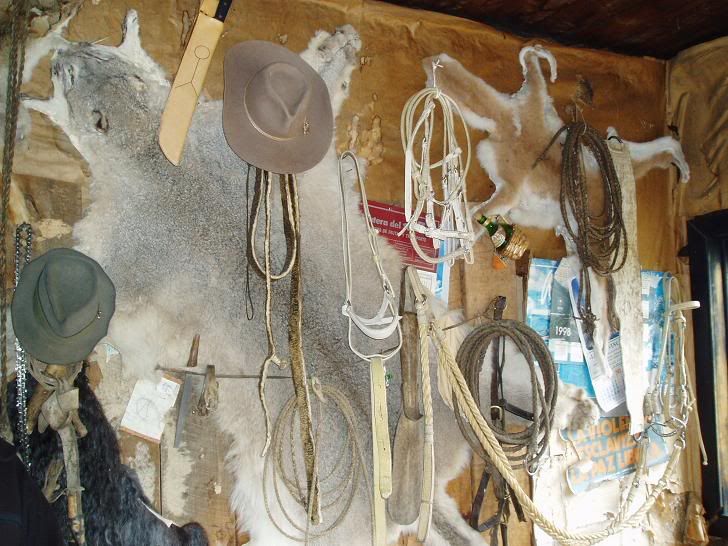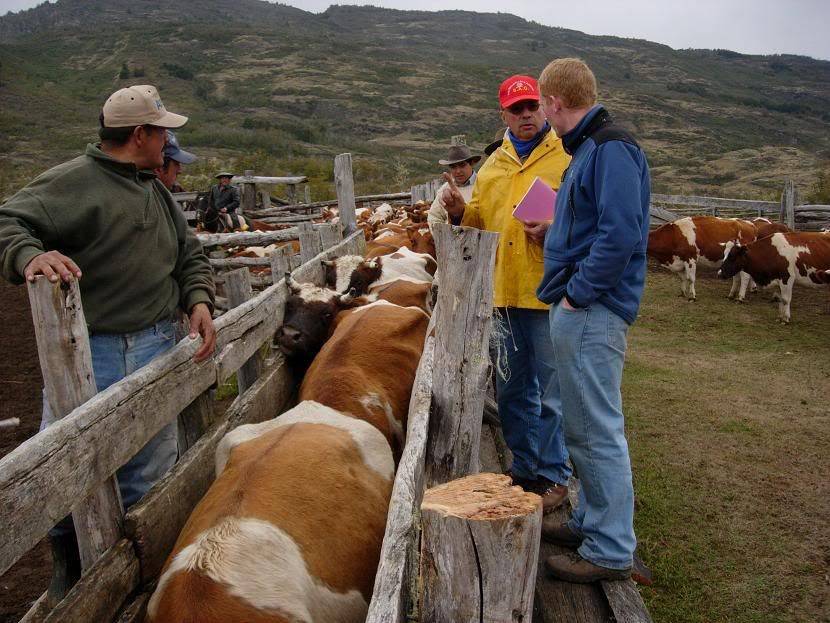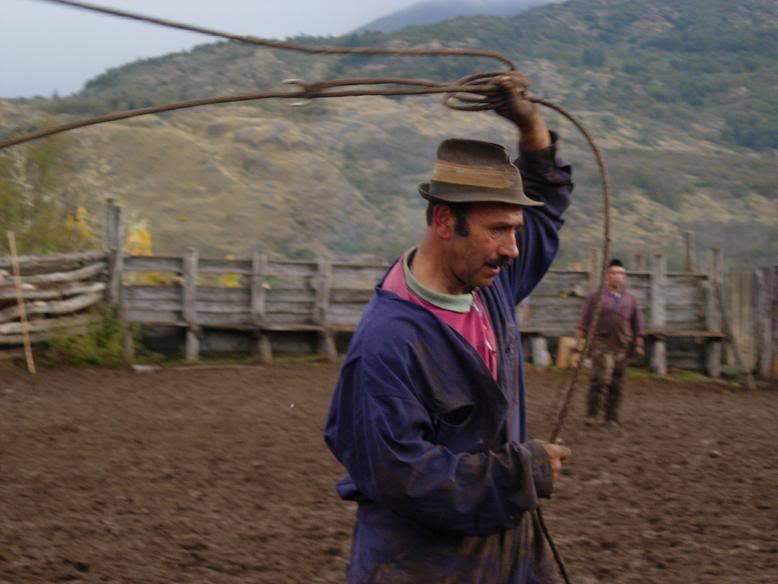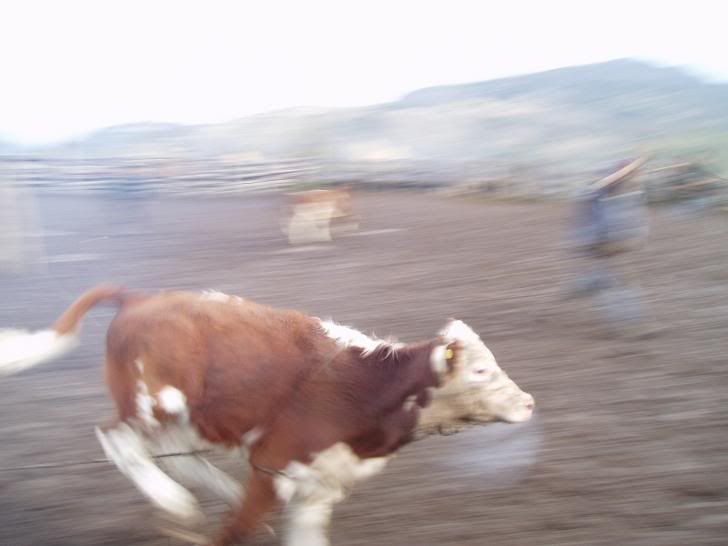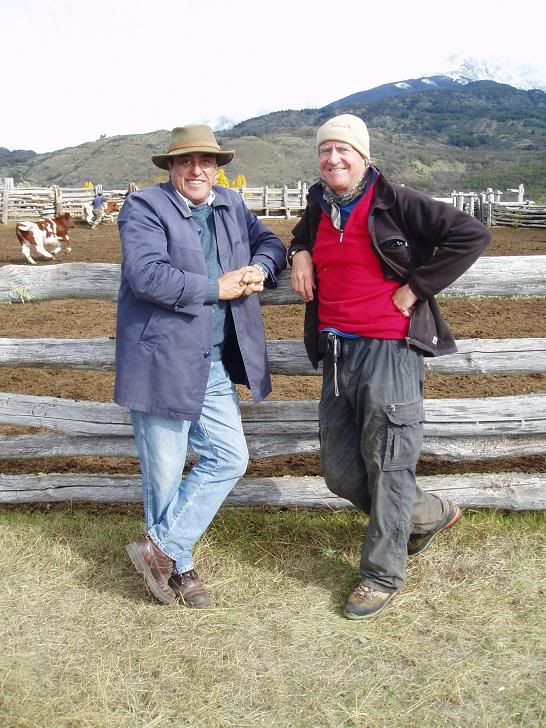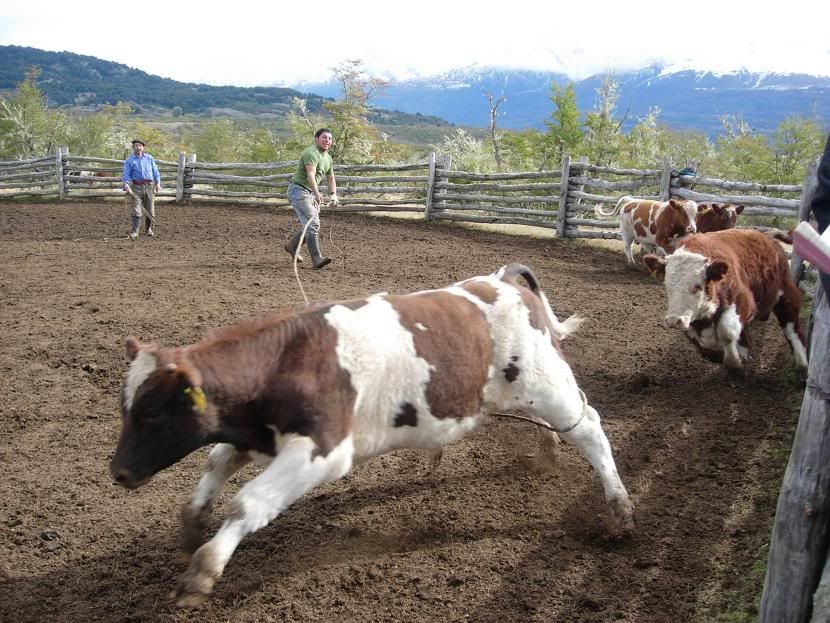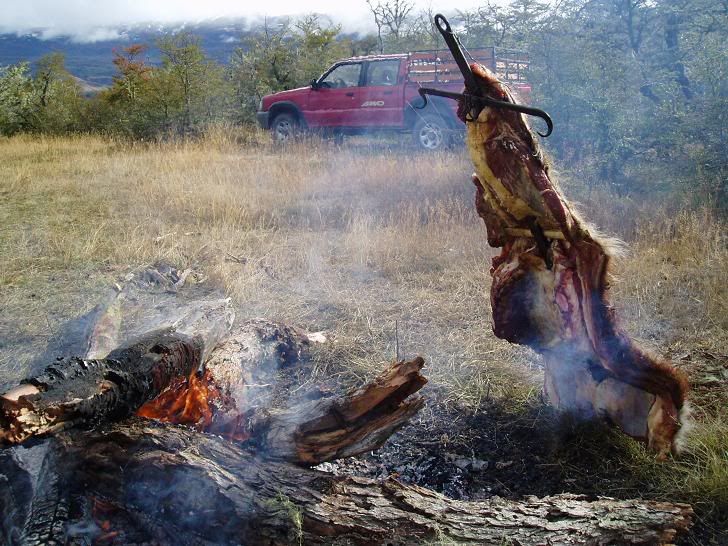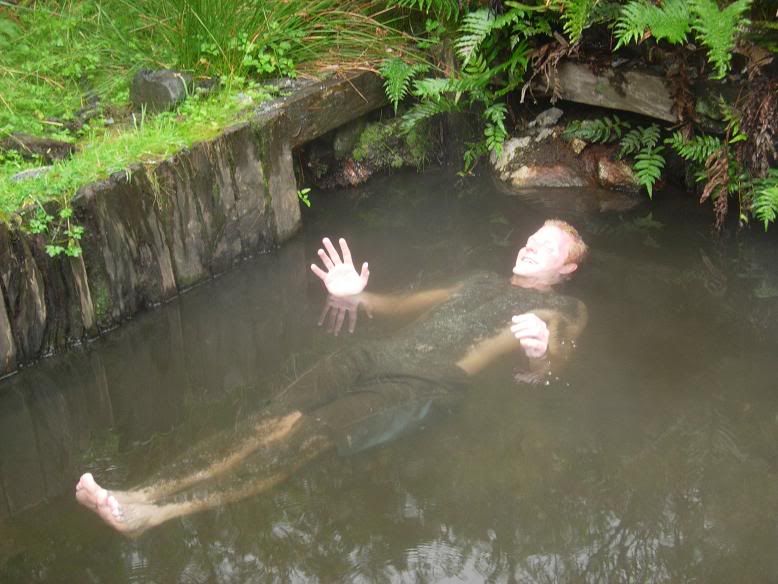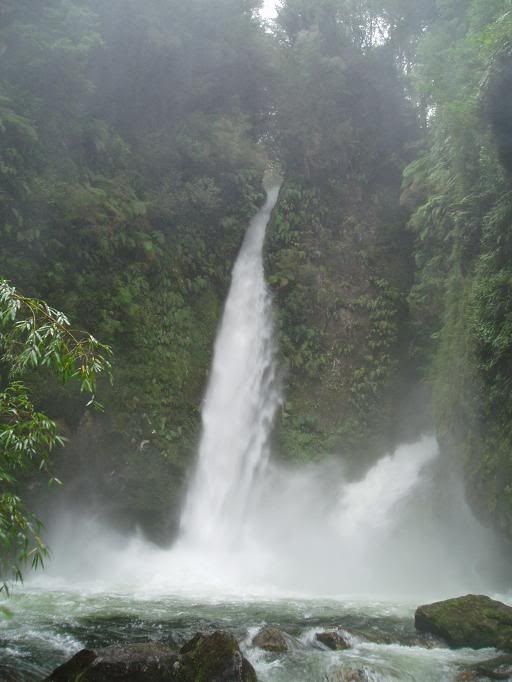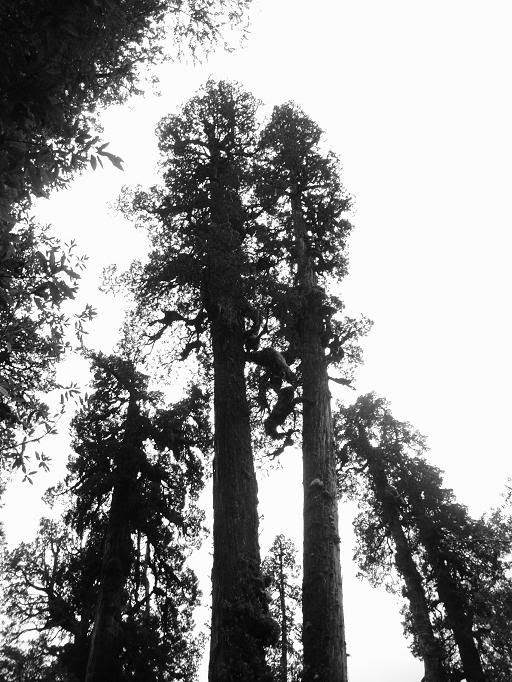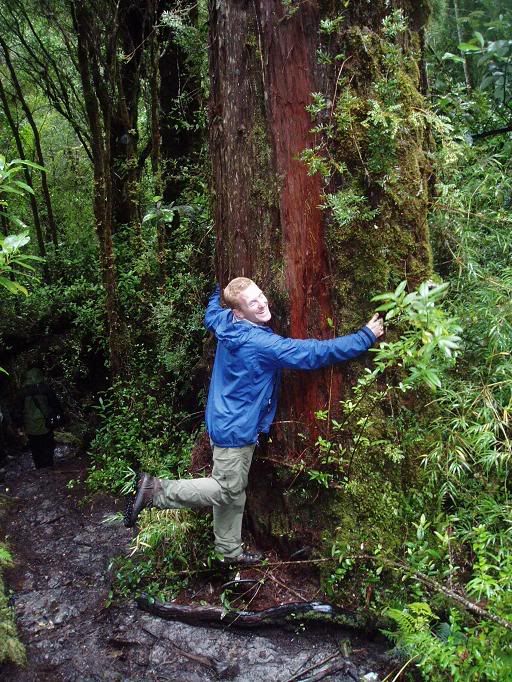
Peurto Montt sunset
We spent the day catching up on how to live normally again, and booked a day tour to the island of Chiloe for the following day. Chiloe has a culture unique to the country - it was the last bastion of Spanish rule in Chile, who even offered the island to the British before surrendering to Chilean patriots in 1823. The area is steeped in legends of mystery and witchcraft, and an unhealthy proportion of the population still believe in covens, monsters under the bed and nymphs in the woods that can turn you to stone at a glance.

The fort at Ancud
It's a bit difficult touring an island the size of Wales in a day and feeling as if you know it, but my time is running short and there are other things I would rather see. So we piled into a minibus run by possibly the only Chilean capable of speaking slow Spanish (just for gringos), and set off. After crossing the 3 mile strait to the island, we visited first Ancud, site of the final handover of the island in 1823 with an old fort to prove it's authenticity. After wandering around for a while, we moved onto Castro, capital of the island and home to famous houses on stilts, craft market and wooden cathedral. In many ways I was more interested in the countryside than the towns; it had a very similar feel to England, with rolling hills of green pastures, filled with dairy cows, with only the odd wooden shack providing the contrast.
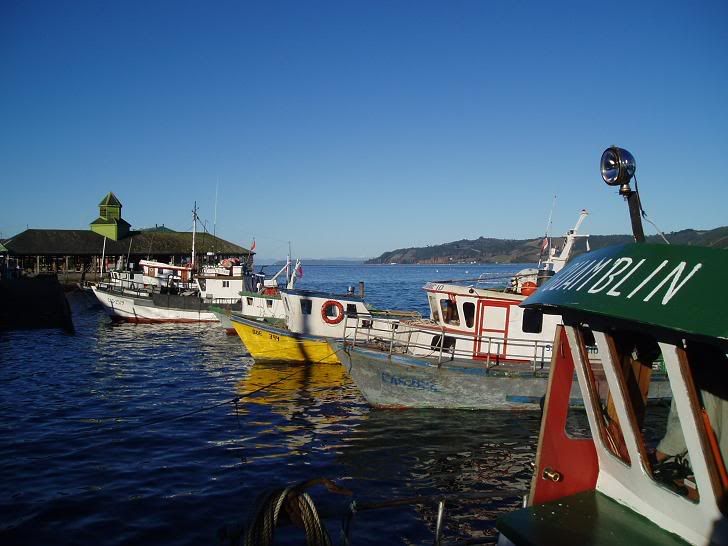
Harbour close to Castro
By the end of the tour I was ready to move back to the mountains; my flight to Easter Island leaves on the 30th and there is the whole Lake District to see first. So the next day we made our way a small way north to Frutillar, a pretty town sitting on a lake with spectacular views of Volcan Osorno - the only reason we had come. The town was clearly lanuishing in the off season, and the feel that we were the only gringos left in Puerto Montt was reinforced by Frutillar, as we strolled down the empty beach and ate in deserted restaurants. We hoped the road to Bariloche, the following day, would bring back into the friendly folds of the Gringo Trail.
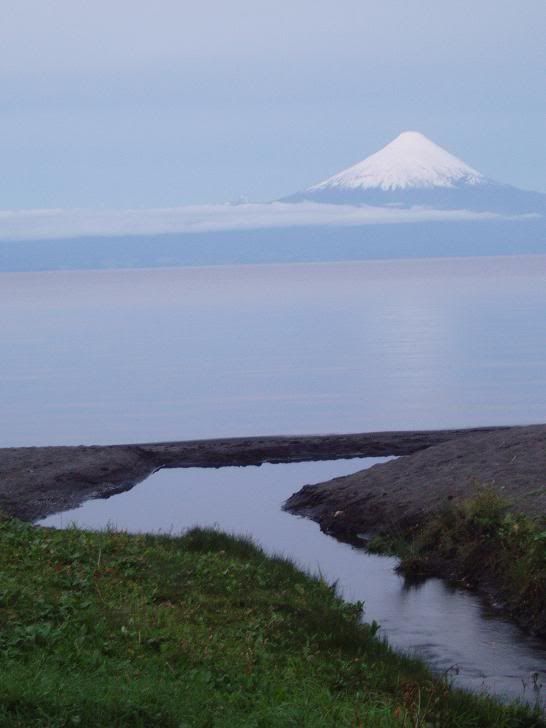
Osorno sunset......
We rose early for a spectacular sunrise over Osorno, then retired to bed to await a sensible hour when we could find our way to Bariloche. As it turned out, things worked like clockwork, and after arriving in the town of Osorno, we caught a bus to Bariloche meeting in the process a couple who had stayed in our hostel in Coyhaique.
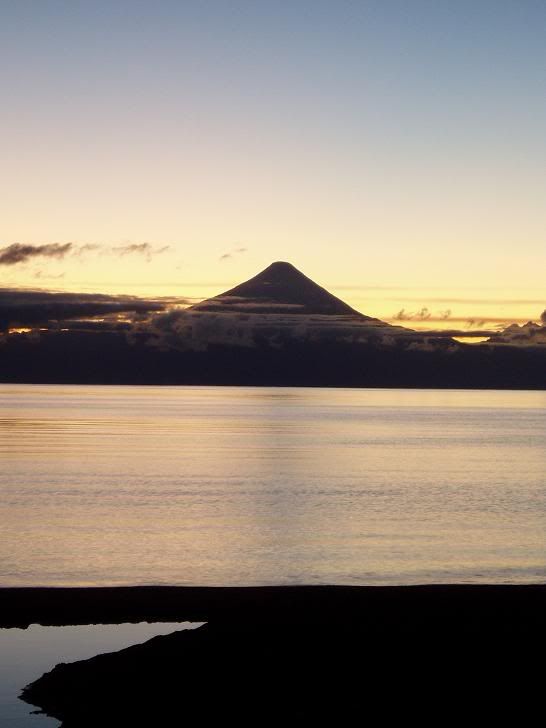
....and sunrise
Bariloche is in the heart of the Argentine part of the Lake District of the Andes, a beautiful area characterised scenic lakes surrounded by mountains - think of the Alps plus forests of beech trees and you're not far wrong. We only stayed one night there - I intended to return later - before heading onto San Martin de los Andes and our eventual target, Volcán Lanín. So we caught another bus the next day and bumped into Leigh and Vivi, two girls we had also met in Coyhaique, plus a German couple called Christoph and Katrin. Christoph and Katrin also wanted to climb Lanín, so we made plans to do it together as soon as we could - we needed to arrange transport there and I needed to hire equipment.
The six of us ended up in a nice hostel in San Martin, and spent the weekend arranging equipment hire and transport - we were assured we needed guides and VHF radios, but we ignored the advice on the basis that Ray and Christophe are both experienced mountaineers. We ended up leaving on Monday for the 100km trip to the base of the volcano where we had to register with the Guardaparques before the climb.
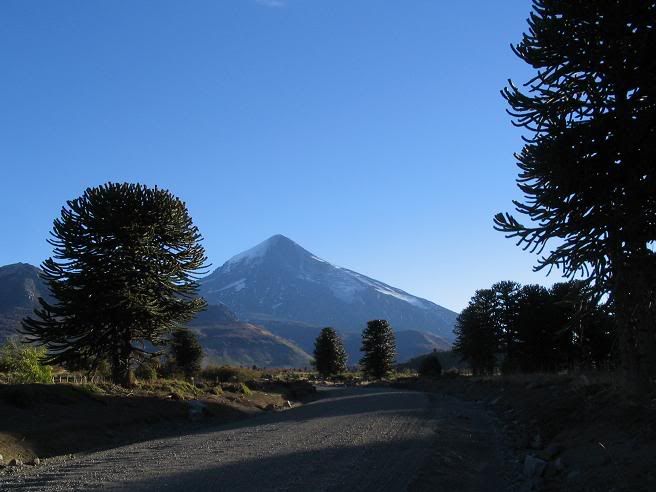
Monkey Puzzle trees and Lanín
Everything went smoothly - the park ranger didn't mind the abscence of radios or guides - and we spent the afternoon walking up from around 1100m to the refugio BIM-6 at 2315m where we were to spend the night. The beech forest that we walked through was ablaze with a riot of autumn colour, from greens to yellows and orange and red, carpeting the surrounding mountains in an almost surreal beauty.
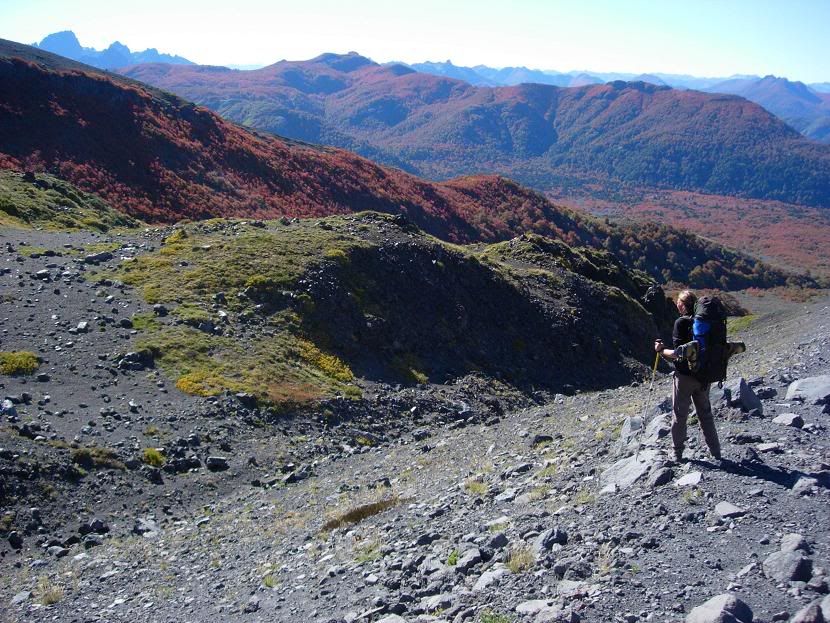
Autumn colours
After clearing the tree line we arrived in good time and checked out the other 2 refugios, both higher than ours but in worse condition. So after a nice night in the bright orange (inside and out) hut, making our own entertainment, we rose at 7am the next day to climb the next 1400m to the summit.

Starting from the bottom....
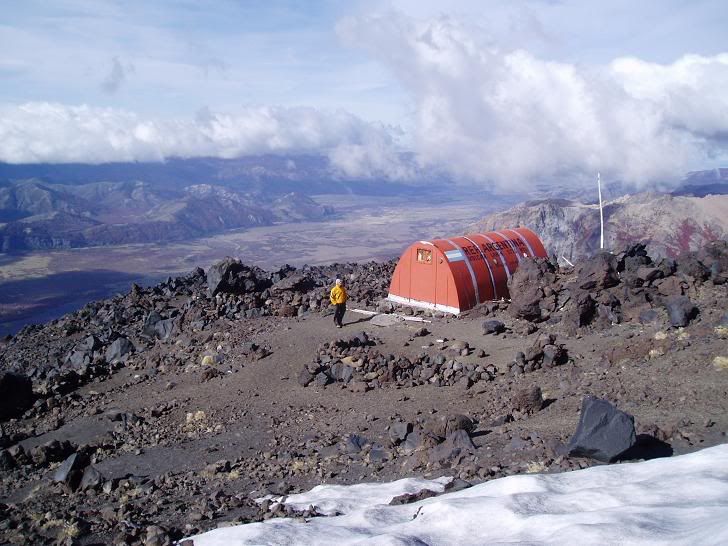
At BIM-6
Overnight the wind, that had been blowing very hard, changed directions and we started our ascent well sheltered and in the blaze of a jaw-dropping sunrise - probably the best yet.

We made good time and got onto snow after an hour of walking, from whereon we used crampons. The way up was simple but got pretty steep in places - 45º slopes make for hard work. By 11am we had reached the top and found the wind, a freezing howling gale that curtailed the summit stay. The views were spectacular - Lanín is 1000m higher than the nearest other mountains, and being the only 4 people on the mountain (over 60 people summit each day during summer) made the feeling even better.
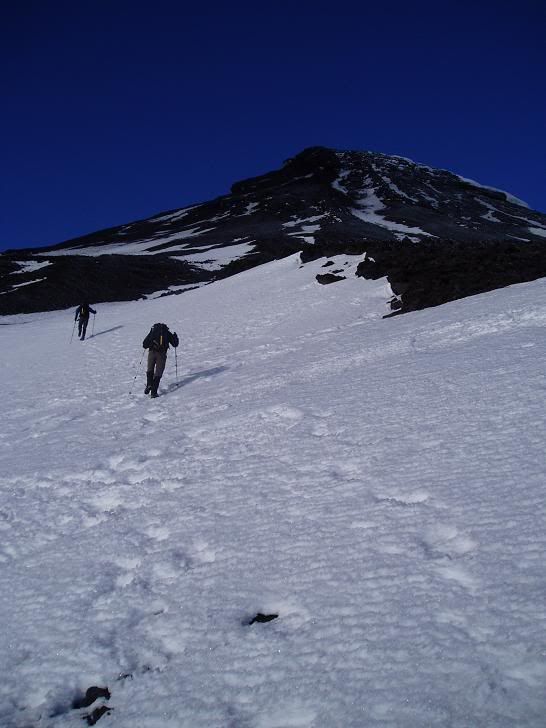
Going up....
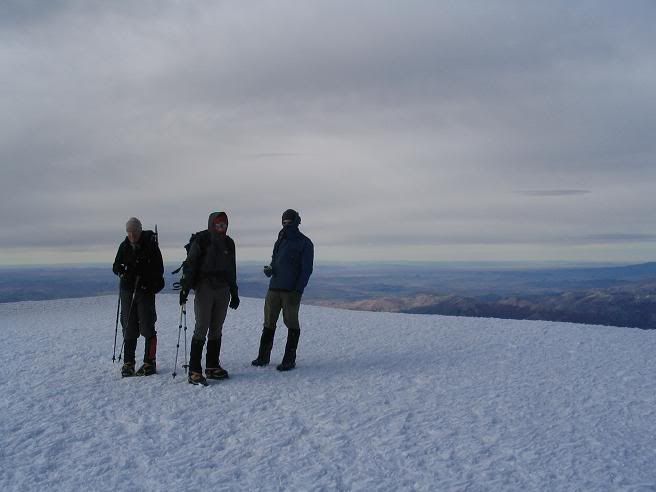
.... on top.....
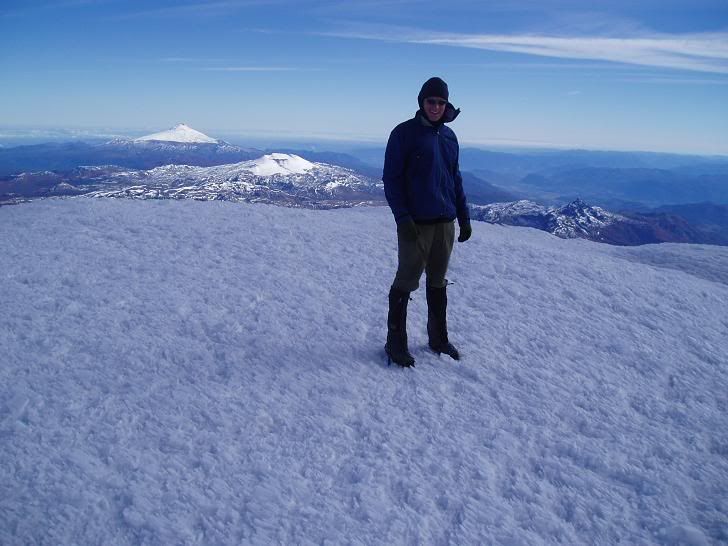
....with myself and Volcán Villarrica in the background
The descent was fast and dangerous; as we got onto a large snow-slope in a couloir for the down climb, we became the skittles in a bowling alley of flying rocks that had been released down the hill by a series of minute tremors (I didn't even feel them!). We made it down intact by moving in pairs, one watching for rocks whilst the other descended a short way. After a total of 6 hours we were back at our refugio and picked our gear for a rapid exit in order to call the taxi to pick us up - a 2 hour wait greatly helped by the beer that a tiny shop was selling.
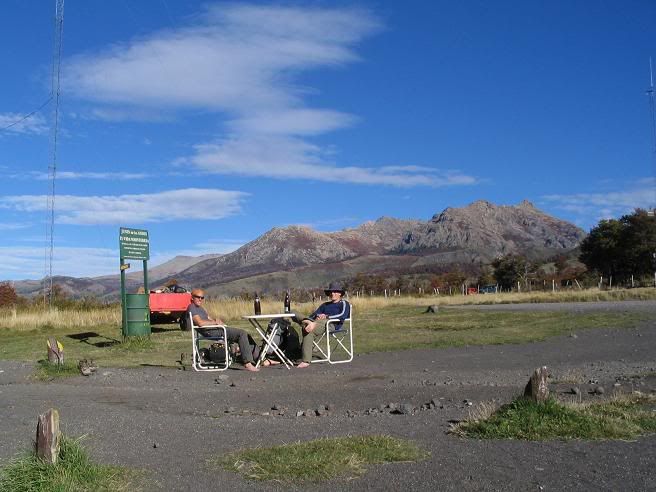
Finished
The next we burnt all our photos onto a CD to share - providentially as it turns out - and made our way back to Bariloche. Here I said goodbye to Ray, after probably a month of travelling together, and went back in to the business of talking to other people. There was a really nice crowd at the hostel but I chose to leave them all to go to Cerro Catedral for a 3 day trek the next day, by myself.
The route was a common one where I could stay the night in refugios and cook in them too - all that was required was food, clothes and a sleeping bag. I took the easy route to get to top of the ridge - cable car then chairlift - and followed a ridge for 3 hours before dropping down to Refugio Frey to stay the night, relaxing for the afternoon under clear blue skies by an alpine lake surrounded by jagged peaks. The day after I made the "8 hour" walk to the next refugio in 3 hours, which was a relief as the cloud came down, wind picked up and it started snowing. After passing a cold night in the refugio I walked out down a very pretty valley the next day, and caught a bus back to Bariloche for my final night there before returning to Chile.
I wanted to get to Pucon, in the northern part of the Chilean Lake District, to try and climb Volcán Villarrica, the most active volcano in these parts that is promising to erupt in a couple of months. Despite assurances that I couldn't get to Pucon in a day from Bariloche, and the volcano was closed, things worked out well and I ended up in a popular hostel in Pucon, booked on the volcano trip the next day.
This volcano climbing experience was a world away from Lanín - over a hundred people went up, all herded by guides (by law) , all kitted out in matching windproofs, colour coded depending on your company. The climb wasn't too hard - we used crampons for several hours on the ice, and reached just below the summit around 1pm. The volcano has increased in activity in the past couple of months and there is a 300m exclusion zone around the crater rim, which you can feel free to ignore if you sign your life away - which everybody did.
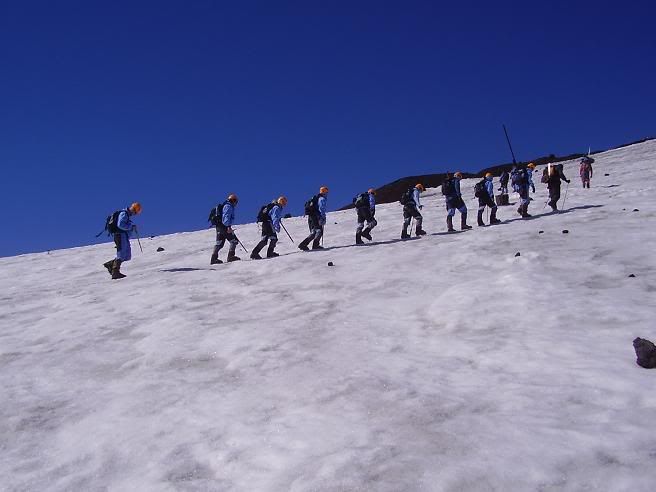
Baa, baa
So we reached the crater rim - well equipped with gas masks and helmets for the vast volumes of toxic gas being emitted and potential explosions - to enjoy the view and see the lava. Sadly, the dense white clouds of gas being emitted prevented most views and and chance of seeing lava; I went for a walk around the rim and lost the group and guide shortly, returning very quickly when there was a small explosion somewhere in the crater.
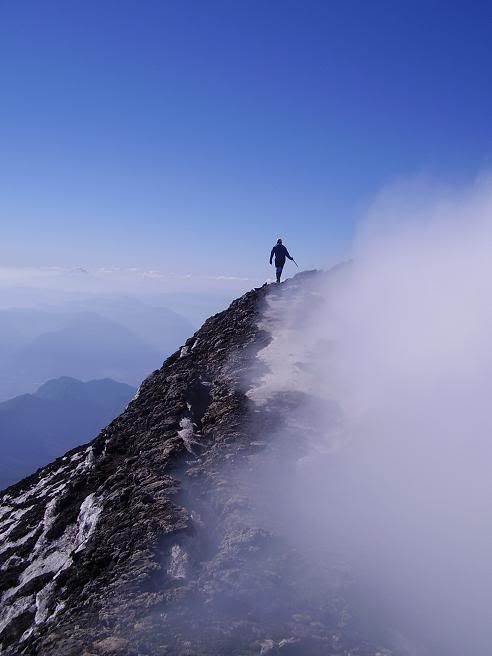
Yours truly on top of Villarrica - borrowed from someone else's camera
By the time we got to the bottom we had all decided a visit to the local hot springs was a must, so 9 of us piled on a bus later that evening and spent a pleasant few hours stewing in hot water, whilst enjoying beer and wine - very pleasant.
The following day was one of relaxation and souvenir shopping, until my dorm room got broken into around 9pm. One of my dorm mates disturbed him mid slash-and-grad, and we came pretty close to catching the guy (just released from prison, seen hanging around the hostel earlier), and there was an adrenaline filled half hour as we jumped into people's back gardens and followed his well planned exit route. The total damage to me was a stolen camera (with 50 unsaved photos), Leatherman (given to me by my brother for being his best man), sunglasses and, rather bizarrely, my used razor and cotton buds disappears. Bless the poor man, he must have had a beard and dirty ears.
This kind of thing was bound to happen - I was hoping not in Chile - but now that it has it really isn't that bad - stuff is only stuff after all, and my main concern was getting a decent new digital camera, plus memory, new sunglasses, and laundry done in Santiago in the day I had there before leaving for Easter Island on the 30th. It all worked out fine (it was a close run thing though) and guess where I am now.....
